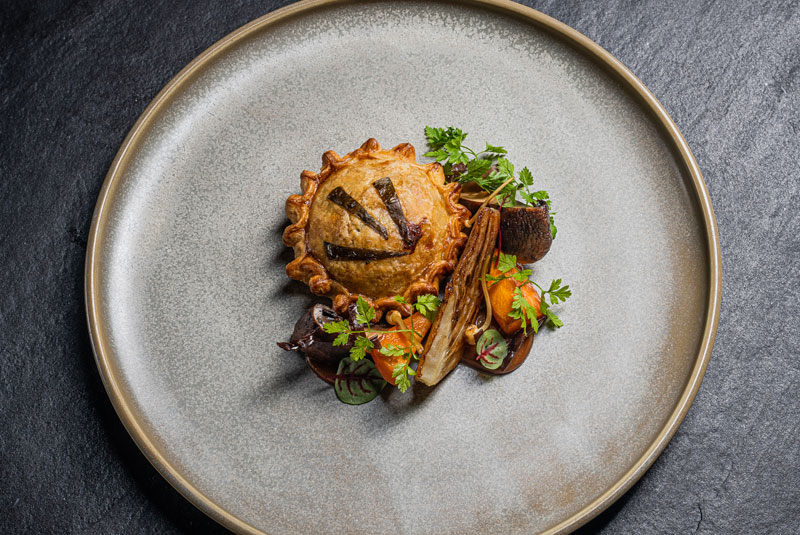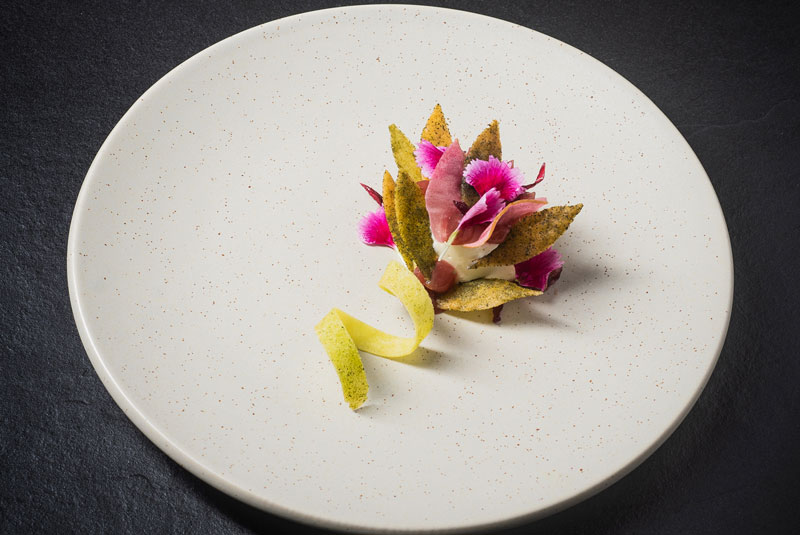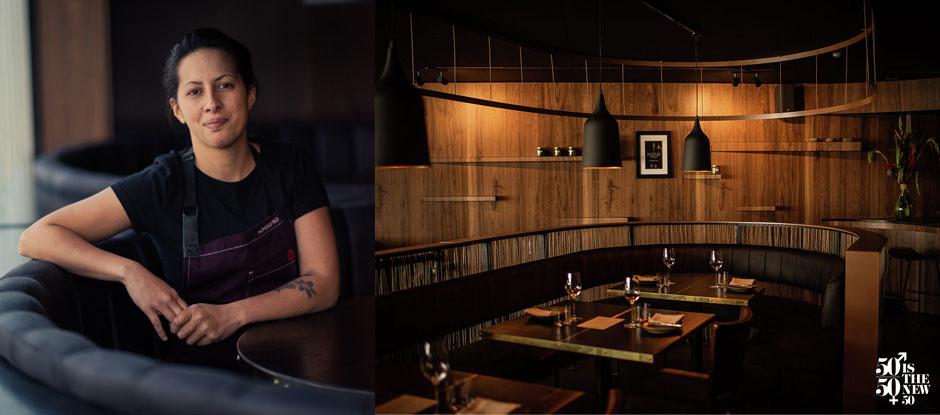New Zealand restaurant Hiakai moved from experimental pop-ups to being named one of Time magazine’s ‘Greatest Places of 2019’ just months after opening in the North Island city of Wellington. Kelli Brett talks to chef-owner Monique Fiso about her background and leading the charge to change the perception of Māori food
Hiakai is the Māori word for hungry. As she set out in 2016 to challenge the usual expectations of this indigenous cuisine, Monique Fiso had no idea that the story she would begin to tell would become her own. With a Samoan father and a mother who is half Māori and half Pākehā (an ancient term for people of light skin), Fiso learned at an early age that food can mean different things to different cultures.
School was difficult and cookery class was the only place where she would stay out of trouble. Here Fiso was totally focussed, energised and excited. “For the first time in my life I felt really good at something,” she recalls. “When the rest of the class was making pitta pockets or stuffed potatoes, I was making char siu bao with multiple sauces.”
At 17 she knew she wanted to be a chef and enrolled in cooking and patisserie diplomas before a need to complete 50 hours’ work experience catapulted her into the kitchen of renowned New Zealand chef Martin Bosley. “I was scared. So scared that when he asked me my name I replied ‘work experience’ – and he called me that for years,” she laughs.
Bosley was pushing the boundaries of the New Zealand food culture before its food-loving residents even knew there were boundaries to be pushed. For two years Fiso savoured every last smear and sphere and then turned her sights to New York and the allure of the Michelin Guide. Chef Brad Farmerie sensed potential and placed her on the sauté station at his Asian-meets-Antipodean restaurant Public; she was off and running, immersed within the gritty vibe that is Nolita in downtown Manhattan.
View this post on Instagram
Along the way, gigs with Missy Robbins at Avoce and Matt Lambert at The Musket Room turned an intention of staying one year in NYC into seven. “Surrounded by so many ambitious and creative chefs, I worked out quickly that there were a lot of amazing cooks out there and I needed to be at the top of my game.” Robins remains the most influential of all Fiso’s mentors: “So calm, yet firm and kind, with precise style and an amazing palate,” she says – and the two remain friends to this day.
From hāngī, fry bread and boil-up to modern Māori food
The call from home was finally heard and Fiso returned to New Zealand at the end of 2015 where a stint at a luxury lodge provided the opportunity to cook with a completely blank canvas and serve international guests a little taste of New Zealand (Aotearoa) on a plate. It was here that the idea of celebrating Māori cuisine with indigenous ingredients was born.
While a series of pop-ups around the country sold out, for Fiso the true story still remained untold. “The year 2016 was the first testing ground for me; the food was nice, but it wasn't there yet. I needed to go back to the drawing board, research, build my confidence and learn to make more interesting food.” The chef took the learnings from her pop-ups to create what is now an outstanding dining experience at Hiakai, a venue included in the 50 Best Discovery guide, where her food is well researched and nothing is there by accident.
The Hiakai pātaka (pantry) provides a diverse range of indigenous flavours. At any given time you might find harekeke (flax) blossom or red matipo leaf syrup, kiekie flower gin, karamū berry vinegar, pickled pikopiko shoots or sweet pickled tī kōuka (cabbage tree) hearts in her repertoire.
Fiso's dish The GOAT, a representation of Tāne Mahuta, God of the forest, with goat pithivier, oyster mushrooms, fennel, brussels and goat jus (image: Amber-Jayne Bain)
Manono bark holds her attention at the moment. Unique to New Zealand and originally used for medicinal purposes, it leaches the bright orangy/yellow of turmeric and was also used as a dye. The Hiakai menu regularly showcases this ingredient in savoury creations but, of late, Fiso is experimenting with it as a dessert in a dish that represents the forest and its floor. She uses the flavours of the bark to create an ice cream that alludes to hokey pokey (the New Zealand term for honeycomb toffee) and it is this continuous push to create food that is distinctive but still playful that makes Fiso one to watch.
A play on fish and chips ‘ika & kūmara’ is clearly not fish and chips as most know it – with its grilled fish, confit kūmara & agria potato, lacto-fermented tomato dressing and kūmara chips with broccoli. But it kind of is, too: a story of Māori culture and Kiwiana that captures the essence of Aotearoa.
A message to a new generation of cooks
In 2020, Hiakai became one of the world’s best places to visit according to Lonely Planet’s ‘Best in Travel’ picks for 2021 and Fiso’s groundbreaking book Hiakai: Modern Māori Cuisine earned great respect for the telling of the New Zealand culinary story. With the current quest for knowledge around language, art and food, it is groundbreaking in its approach to a new era for Māori food. “It's pretty cool to get messages from young chefs who are using the ingredients and taking a component of a dish and working it into their own creation. That was the point of the book - for people to get a greater understanding of our ingredients, use the tools in the book and then do their own thing,” she says.
Fiso has become a role model for young chefs and she has high hopes for women seeking a serious career in hospitality. “Looking back, when I was younger there were definitely challenges, although the industry seems to be taking steps to change in a post ‘me too’ environment. I try not to focus too much on gender and get on with the job. I do feel that some of the stereotypes are changing for the better. When I was starting as a chef I was constantly told to work in the pastry area. If I wasn’t working in the pastry area, I was singled out as ‘the chick’ in the sauté section. I’d carry two sacks of flour instead of one just to prove that I could.”
Wāhine Toa, a dish that pays tribute to groundbreaking Māori author Patricia Grace and the strength of femininity, with coconut lime semifreddo, kawakawa tuiles, hibiscus and rhubarb (image: Amber-Jayne Bain)
The fact that she no longer needs to fight to be able to break down the fish has become a huge win for Fiso and she constantly reminds her younger team that it was not that long ago that they would have had to stand their ground and demand to be in the boys’ club. She admits there were moments in her career where it was extremely painful and depressing.
For a woman who has spent most of her adult life working very, very long hours and perfecting her craft, she says Covid has taught her one thing: that her sole focus needs to shift a little from the professional to include a work-life balance. Having said that, she cannot imagine a day not doing what she always does. “I’m not done yet, there is a lot I still want to achieve. Who knows what things might look like in a year or two years? Hiakai in its current iteration is amazing and great, but we won’t just be rolling out the same old trolley; we’ll be switching it up every step of the way.”
Author Kelli Brett is the editor of Cuisine Magazine in New Zealand.
‘50/50 is the new 50’ is a content series created by 50 Best and supported by S.Pellegrino with the shared aim of promoting equality, inclusivity and balance in the hospitality sector and beyond.
The World’s 50 Best Restaurants is coming back in 2021, with an awards ceremony and hybrid event programme to be hosted in Antwerp, Flanders, in October. To be the first to hear about the latest news and announcements, join the community on Instagram, Facebook, Twitter and YouTube.
Header portrait of chef Monique Fiso by Amber-Jayne Bain.

